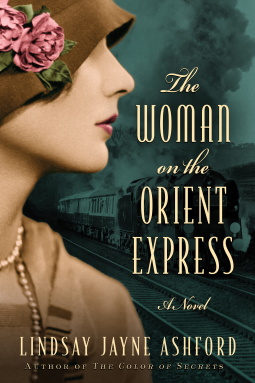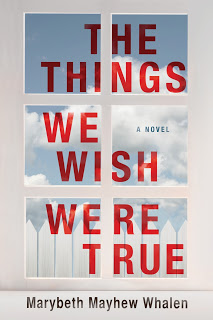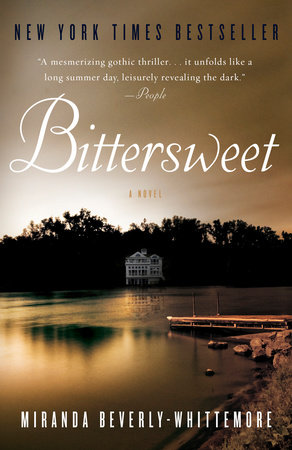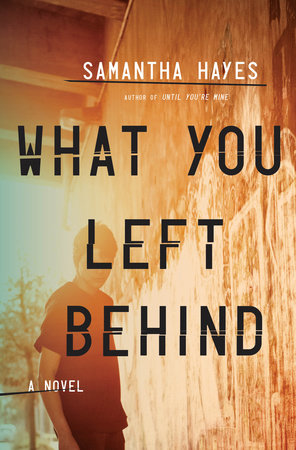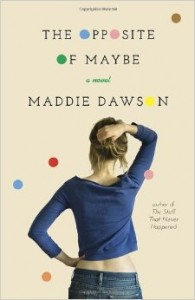The Woman on the Orient Express. Lindsay Jane Ashford. 2016. Lake Union Publishing. 332 pages. [Source: ARC provided courtesy of NetGalley.] I selected this because I love Agatha Christie. I fell in love with her writing as a teenager and was excited to read a fictionalized account of her tumultuous life. The Woman on the Orient Express doesn’t disappoint. It is based on several high-profile aspects of Christie’s life, such as her failed first marriage and her subsequent trip to Baghdad on the Orient Express. Despite being fiction, it manages to fill in gaps that are not only believable but seem authentic. As noted by Ashford, these events simply form a frame for the book. The author’s take at recreating the experiences Christie had on her trip and the people she encountered are frighteningly believable. Agatha is still reeling from her failed marriage and the reality of her ex-husband moving on so quickly to start a new family. Her two-month trek is meant to give her a boost in moving forward; she goes as far as to travel under an assumed name to do so. An unexpected bunk-make, Katherine, has her own secrets as she mourns the death of her husband and…
The Things We Wish Were True. Marybeth Mayhew Whalen. 2016. 209 pages. Lake Union Publishing. [Source: Kindle First Program.] Have you ever read something that can only be described as being on the tracks when a slow-motion train wreck is about to happen? The constant feeling of “it’s going to happen, I can’t stop it, and it’s going to be really bad” gripped me while I read The Things We Wish Were True, but in the best way. I was compelled to finish reading nearly as soon as I started, and I wasn’t disappointed along the way. On its face, this is a story of a quiet southern town, Sycamore Glen, N.C., where families spend all year looking forward to afternoons spent together at the neighborhood pool. Everything has its place, and everyone knows what to expect. But this town is gilded, and its secrets bubble just below its surface. What is more enticing, however, is the intricate way in which each family’s secrets are intertwined with the others.
Bittersweet. Miranda Beverly-Whittemore. 2014. Broadway Books. 381 pages. [Source: Blogging for Books.] How far will you go to fit in? What secrets will you seek, and what secrets will you keep? Those are the perennial questions that Mabel Dagmar faces as she finds herself immersed in the lavish lifestyle of her wealthy roommate for a summer. Mabel is a simple girl from Oregon who has the (mis)fortune of rooming with wealthy, party-girl Genevra their freshmen year of college. Theirs is largely a relationship of indifference, wherein Ev tolerates Mabel’s presence while mildly hiding her disdain for her. A turning point is Ev’s 18th birthday, in which she follows family tradition by donating a Degas to their college (how disappointing that it wasn’t The Met). Mabel’s invitation to the celebratory affair marked the first time the two women have any real personal interaction. The result is Mabel’s invtation to vacation with Ev in her family’s estate, Winloch, in Vermont.
What You Left Behind: A Novel. Samantha Hayes. 2014. 32o pages. Crown Publishing. [Source: ARC provided courtesy of Blogging for Books.] I like to think of myself as someone who can forecast a book’s plot twists. I’m usually pretty good at sifting through the little details meant to foreshadow, instead using them to sniff out the real culprit in a story. Thus, reading What You Left Behind was a challenging read for me. The author wove an interesting story with intricate details that constantly threw me off. The story starts with a motorcycle accident that kills a young homeless man in sleepy Radcote. With the discovery of a suicide note, it appears that Dean has become the first in a new rash of teen suicides to rock the town’s residents. The reader is then introduced to Lorraine, a police detective supposedly on vacation to visit her sister Jo and nephew Freddie. Instead, she is compelled to explore the suspicious circumstances behind Dean’s death as another teen is found dead of an apparent suicide just days later.
The Opposite of Maybe. Maddie Dawson. 2014. Broadway Books. 400 pages. [Source: ARC provided courtesy of Edelweiss.] When I started reading The Opposite of Maybe, I wasn’t immediately drawn in. I wasn’t sure I’d relate to the characters, Rosie and Jonathan, because they seemed like such anomalies. They’re middle-aged, seemingly commitment-phobic, and generally not what you expect of people their age. Then I kept reading. Instead of what I expected, I was treated to a story about the messy reality of relationships, both familial and romantic, and how we make sense of our choices. I found myself constantly conflicted about Rosie. One minute, she seemed so headstrong and assured, but the next, she seemed weak and complacent. This balance made her real and made her endearing. I felt completely caught up in her life — the confusion about impending motherhood, the heartbreak of a failed relationship, and the joy of a new friendship. Rosie is the heart of this story, through which everyone else’s stories are highlighted.

